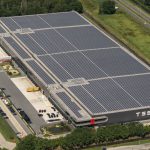
By now, many of us have heard of going solar and the newfound possibilities of financial freedom and sustainability. However, in 2021 and even 2022, the costs associated with switching away from traditional utility sources can still be prohibitive—even for those who might have initially been interested in the idea.
The good news is that you can now join the solar revolution with relative ease and begin to realize the savings potential that solar energy can offer. As we look to 2023 and beyond, switching to solar power is a wise choice and a financially lucrative option that can help you maximize your savings. So if you’re looking to unlock the potential of solar energy and save money in the long run, read on to find out how to begin your journey to energy independence in 2023!
Quick Answer
The savings you could expect when switching to solar energy depend on various factors, such as your home’s size and current energy usage. You can estimate your potential cost savings by researching local solar companies and requesting free quotes.
What is solar energy?
Solar energy is an increasingly popular renewable source due to its abundance and effectiveness. Solar energy is obtained directly from the sun via photovoltaic solar panels, which absorb the sun’s rays and convert them into electricity. This electricity can power homes and businesses, potentially providing substantial energy cost savings without relying on traditional sources like fossil fuels.
Proponents of solar energy argue that it offers a great deal of potential for both residential and commercial customers by reducing dependence on fossil fuels and helping communities transition away from a reliance on non-renewable sources. Going solar can also benefit the environment, significantly reduce emissions that contribute to climate change, and create new jobs in industries related to the maintenance, installation, and operation of solar infrastructure, providing economic benefits and savings in energy costs. Businesses could see reduced operational expenses due to lower electricity bills and larger returns if they can generate energy with their own solar array.
On the other hand, skeptics may point out that upfront costs for solar panel installation are high, though, with government incentives and energy savings over time, these can be offset. Additionally, questions have been raised about the capacity of solar systems since the sun only shines during certain times of the day or year depending on geographic location, making it difficult for them to be relied upon as a primary light source.
The bottom line is that solar energy presents huge potential when harnessed correctly but requires careful planning before purchasing and installing a system and understanding the limitations of when you can expect maximum output. With more widespread access to clean energy sources like solar technology becoming available each year, now is an opportune time for people and companies looking to unlock their savings potential with renewable sources like this by 2023. As we explore how solar energy works and its many benefits in more detail shortly, let’s first start by talking about what makes it such an attractive alternative in the first place.
How does solar energy work?
In simple terms, solar energy is made possible by using a device known as a photovoltaic (PV) cell. The PV cell collects the energy of sunlight and converts it into electricity, which can then be used in homes or businesses. Solar energy is considered a renewable energy source because it does not use any of our natural resources, such as water or coal, to create power. Additionally, it is one of the cleanest sources of energy we have access to, meaning that it does not produce any greenhouse gas emissions when used.
When discussing solar energy, many debate whether it is an effective and reliable energy source. While solar energy can sometimes be unreliable due to weather conditions, technological advances have allowed for more efficient solar panels with greater reliability. For instance, many companies have developed technology that utilizes direct and indirect sunlight to generate energy, helping to ensure constant energy production even in less-than-ideal weather conditions. Additionally, solar panels are much more cost-effective than other energy sources, such as fossil fuels or nuclear power, making them an attractive option for homeowners and businesses.
In conclusion, while there may be some debate over how reliable and effective solar energy is as an energy source, technological advancements have made it a highly viable option for many different applications. As we look towards a more sustainable world in 2023, considering switching to solar energy could help you unlock your savings potential while helping protect the environment at the same time. Whether you decide to invest in home solar panels or commercial installations, switching to this renewable energy source can be an extremely productive way to achieve your financial goals while reducing your environmental impact correctly. With this in mind, we will focus on how solar energy can save you money in 2023.
Must-Know Points
Solar energy is an especially attractive renewable energy source due to its lack of use of natural resources, lack of greenhouse gas emissions, cost-effectiveness, and advances in technology that have improved efficiency and reliability. Switching to solar energy can help save money and the environment correctly, making it a viable option in 2023.
How Solar Energy Can Save You Money in 2023
Solar energy holds the potential to save you money in 2023 and beyond. With continued advancements in technology and increased government support for renewable energy solutions, solar energy is becoming more accessible than ever before. By switching to solar, consumers can expect lower bills from their utility companies and an overall decrease in their home’s carbon footprint.
For example, many states have established net metering policies that allow you to be credited for generating electricity and selling it back to the grid during peak demand. This can provide direct savings on your electricity bill, as you receive payments for the energy you generate that is put back on the grid. In addition, many solar power providers also offer tax credits and other incentives to help reduce overall installation costs.
The potential of solar energy saving you money in 2023 will only increase in the coming years, providing consumers with greater incentives to make the switch. Estimates suggest that, depending on the size and location of a system, savings could reach 50% or more when all installation costs are considered.
Leveraging solar energy has both environmental and cost-saving benefits. For those looking to unlock their full savings potential in 2023, transitioning to solar is an excellent option that could provide long-term value for years to come. But what about upfront costs? That’s where the next section takes us: Cost Savings from Reduced Utilities: An Overview of How State-Level Incentives Can Continue to Help Reduce Home Electricity Bills by Utilizing Renewable Energy Solutions Like Solar.
Cost savings from reduced utilities
Installing a solar array can be a great way to reduce your utility costs in 2023. As the cost of electricity and other utilities rises in the coming year, investing in a clean energy solution like solar can help you maintain a steady monthly utility bill. For example, in 2020, the average American household using 10,500 kWh per year paid an estimated annual electricity expense of $1,405. However, households with a solar panel system could save over 20% on their total energy costs [SOURCE].
The debate surrounding the financial return on investment boils down to how much you spend on energy versus how much you can expect to save in energy costs when installing and running a solar panel system. For instance, it’s true that upfront installation costs for an environmentally friendly system can sometimes be more expensive than traditional non-renewable options; however, many financial incentives are available for homeowners looking to go green. Tax credits—both nationally and at the state level—often offset those installation costs and help homeowners achieve considerable long-term savings associated with renewable energy sources such as solar power [SOURCE].
The potential cost savings from reduced utilities provided by solar energy cannot be understated, especially given rising electricity prices. With the right solar setup, homeowners may benefit from decreased operational costs and an overall reduction in their utility bills now and into the future. And while some of these savings will depend heavily on location, additional federal and state-level financial incentives are available to incentivize green investments, further supporting these potential cost savings. Despite the potential initial investments required to fully realize these advantages, transitioning to solar power is a viable option for homeowners looking to cut down on their energy bills in 2023.
As we continue our discussion of ways to unlock your savings potential with solar energy in 2023, let’s look at all the financial incentives and government investments that make going green even easier.
Financial Incentives and Government Investments
As the world continues to recognize the utility of solar energy and the importance of transitioning to renewable resources, national governments and state initiatives have sought to incentivize investments in this technology. Government funding is widely available for those wishing to purchase both residential and commercial-scale solar energy systems. These financial incentives can include rebates, tax credits, grants, net metering, and other secondary benefits such as free or reduced installation costs.
For instance, the United States federal government offers 26% tax credits for all residential solar installations up to $1,000 in qualifying property costs. Many states also offer programs to reduce electricity bills through net metering. This defers electric bills by maintaining a credit balance in exchange for excess solar-generated electricity flowing back onto the utility grid. These combined financial incentives can reduce the cost of installing solar panels by a significant amount, making solar an even more attractive investment opportunity than ever before.
In addition to direct reductions in cost, governments are increasingly investing in increased research and development related to solar energy technology. The increase in government-sponsored research increases innovation potential while reducing the cost of implementation for households and businesses alike. This helps ensure that investing in solar energy will remain a viable and continually improving option in the future.
Solar energy has become much more accessible thanks to these various financial incentives backed by government support. This represents an exciting step forward for unlocking your savings potential with solar energy as we approach 2023 and beyond. As discussed in the following section, there are many other compelling reasons why it makes sense for families and businesses to consider switching to this powerful renewable resource.
Other Benefits of Solar Energy
While the financial incentives and government investments certainly make solar energy attractive in terms of potential savings, they’re far from the only reason to consider making the switch. Many individuals focus primarily on the other perks of utilizing solar power when they deem it time to make the jump.
For one, solar energy can be seen as a protection against rising electricity prices. As electricity companies continue to raise their prices, those who haven’t invested in solar energy sources can expect to see a greater drain on their pocketbooks. Solar owners face significantly fewer risks of large increases in their electric bills due to their reliance on a more consistent energy source. Plus, with many of these installations available for lease or purchase with no-money-down commitments, it often becomes a very appetizing option compared to traditional long-term electricity plans.
Furthermore, organizations and individuals who opt for solar technology often report feeling great pride and satisfaction knowing they’re doing their part to reduce greenhouse gases and contribute to environmental sustainability. Solar power produces zero emissions during operation, making it an incredibly safe choice for planetary health and your own wallet’s health.
Then, numerous advantages accompany those who take the leap and switch to solar energy resources for their electricity needs. Of course, if the financial incentives didn’t convince you that adopting solar power in 2023 is a great choice for unlocking your savings potential, surely a combination of its numerous other core benefits will be enough to tip you over the edge! After all, what better way to start saving money than by investing in something that provides you with multiple returns? Now let’s explore how exactly you can make this transition happen so that you can take advantage of all these benefits sooner rather than later.
How to Start Saving with Solar Energy
Saving money with solar energy is becoming increasingly attractive as the cost of solar photovoltaic (PV) systems drops, and solar electric generation efficiency keeps rising. For consumers who invest in solar power, savings begin almost immediately through reduced electricity bills, tax benefits, and increased home values. Moving to a renewable energy system that includes solar power provides users with a way to not only save money but also become more sustainable.
When considering how to start saving with solar energy, potential solar power users should research their current electricity rate plan, as some plans offer incentives for producing excess energy. To maximize savings, it is important to understand the rate structure of all grid-tie rate plans offered by your utility provider and identify any rebate programs available in your area. Homeowners should also consider the size and orientation of their property when estimating how much money they could save with a rooftop PV setup. A qualified contractor can help determine the right system size and components needed for your installation needs at a competitive price.
In addition to the financial benefits of installing solar systems mentioned previously in the article, other social benefits are associated with investing in green technology. Solar energy has zero emissions, which contributes to slowing global warming and lessening pollution. Another positive effect of renewables is that it strengthens the local economy by providing jobs for installation technicians and maintenance workers once the panels are installed.
In conclusion, adding solar energy sources for personal use or business applications can provide countless economic, health, and environmental benefits for local communities, especially when used with other forms of renewable energy like wind and geothermal power. Proper preparation and research on what kind of proposition works best for you and your living or working situation can guarantee a more substantial return on investment through saved energies over time.
Most common questions
How much will I save on my energy bills by using solar energy in 2023?
The amount you will save on energy bills by using solar energy in 2023 really depends on how much energy you use and the specifics of your setup. Generally speaking, however, installing a solar energy system will help reduce your utility bills over time by offsetting the electricity you use from the grid. Furthermore, if you generate more energy than you use, you may even get money back from your electricity provider. Therefore, it is likely that in 2023, you can save between 10 and 20% off your electricity bills with a solar panel system.
What types of solar energy systems can I install, and what will the costs be?
Various types of solar energy systems will be available for installation in 2023. These include photovoltaics (PV), which convert the sun’s light directly into electricity; concentrated solar power (CSP) systems, which use mirrors to focus sunlight onto a small area and then generate heat or electricity; and solar thermal systems, which typically provide hot water for uses such as space heating or swimming pools. The installation cost will vary depending on the specific system chosen, but typically it ranges from $6,000 to $12,000 on average after tax credits and rebates. Additionally, energy costs will be lower over the system’s lifetime since solar-generated electricity is free. This can significantly increase your savings potential through reduced energy costs and additional income from cheaper energy bills.
What state and local incentives are available for solar energy installation?
The answer to this question depends on what state and local jurisdiction you live in, as incentives for solar energy installation vary from place to place.
In most states, homeowners can take advantage of solar tax credits and solar renewable energy certificates (SRECs), which can help reduce the upfront costs of a solar energy system. In addition, many states offer property tax exemptions for installing renewable energy systems, such as solar panels. Some utilities may also offer net metering or buyback programs that allow homeowners to sell their excess energy production back to the utility company.
Local governments may also have incentives available through grants, loans, or rebates. Depending on where you live, finding free or discounted installation services for solar power systems through partner organizations or solar cooperatives is possible. It’s worth thoroughly checking your state and city government websites to find out exactly what incentives are available in your area








